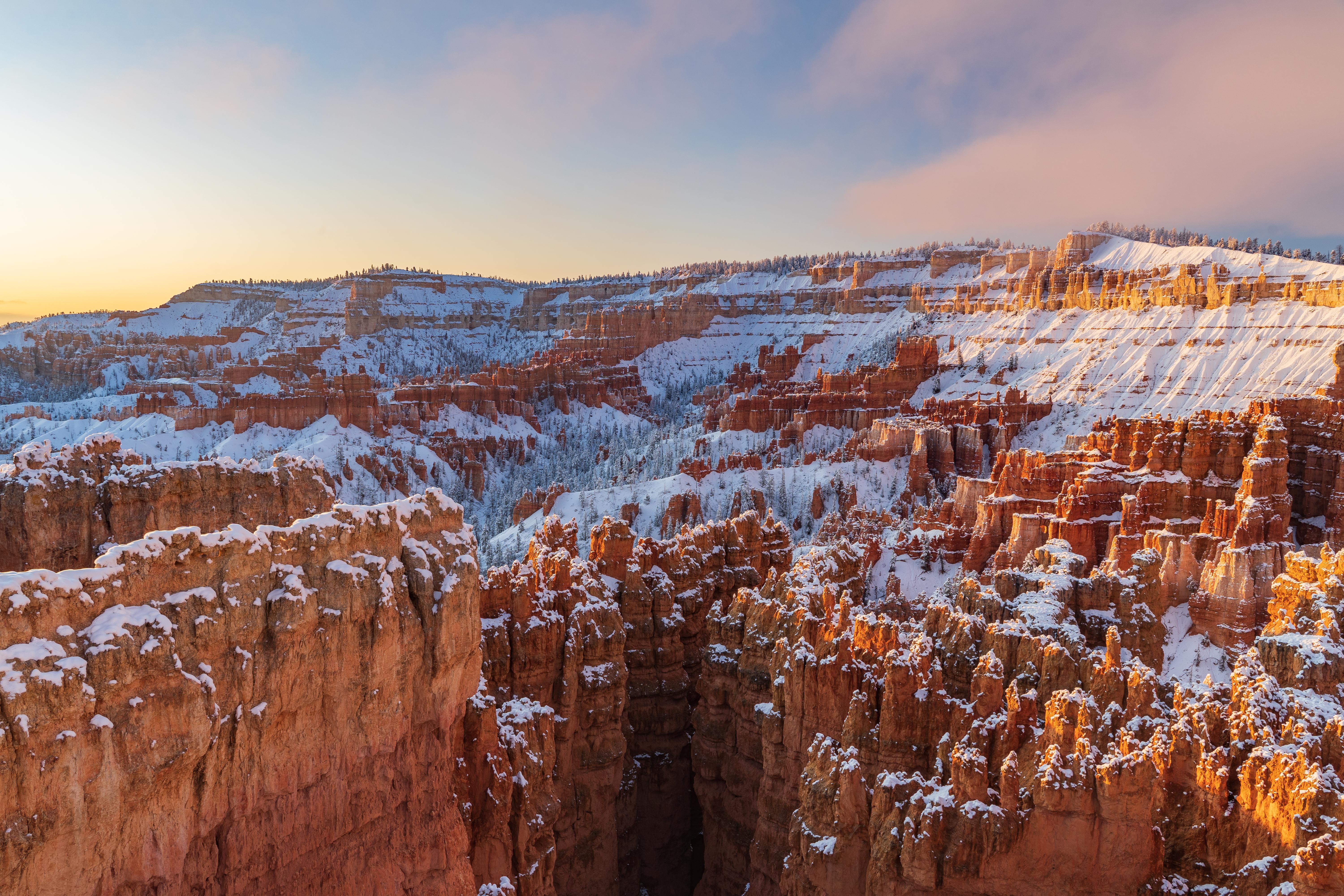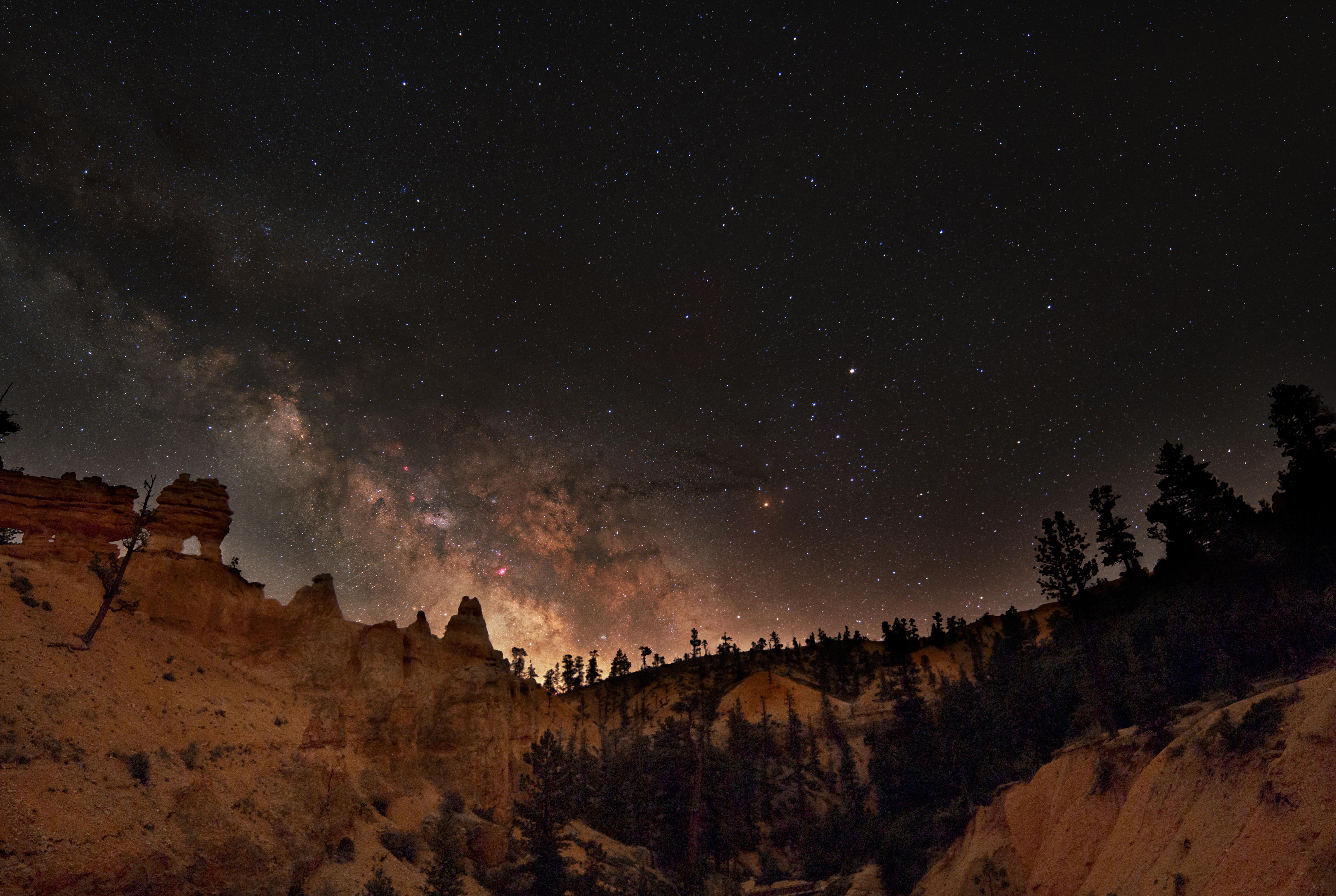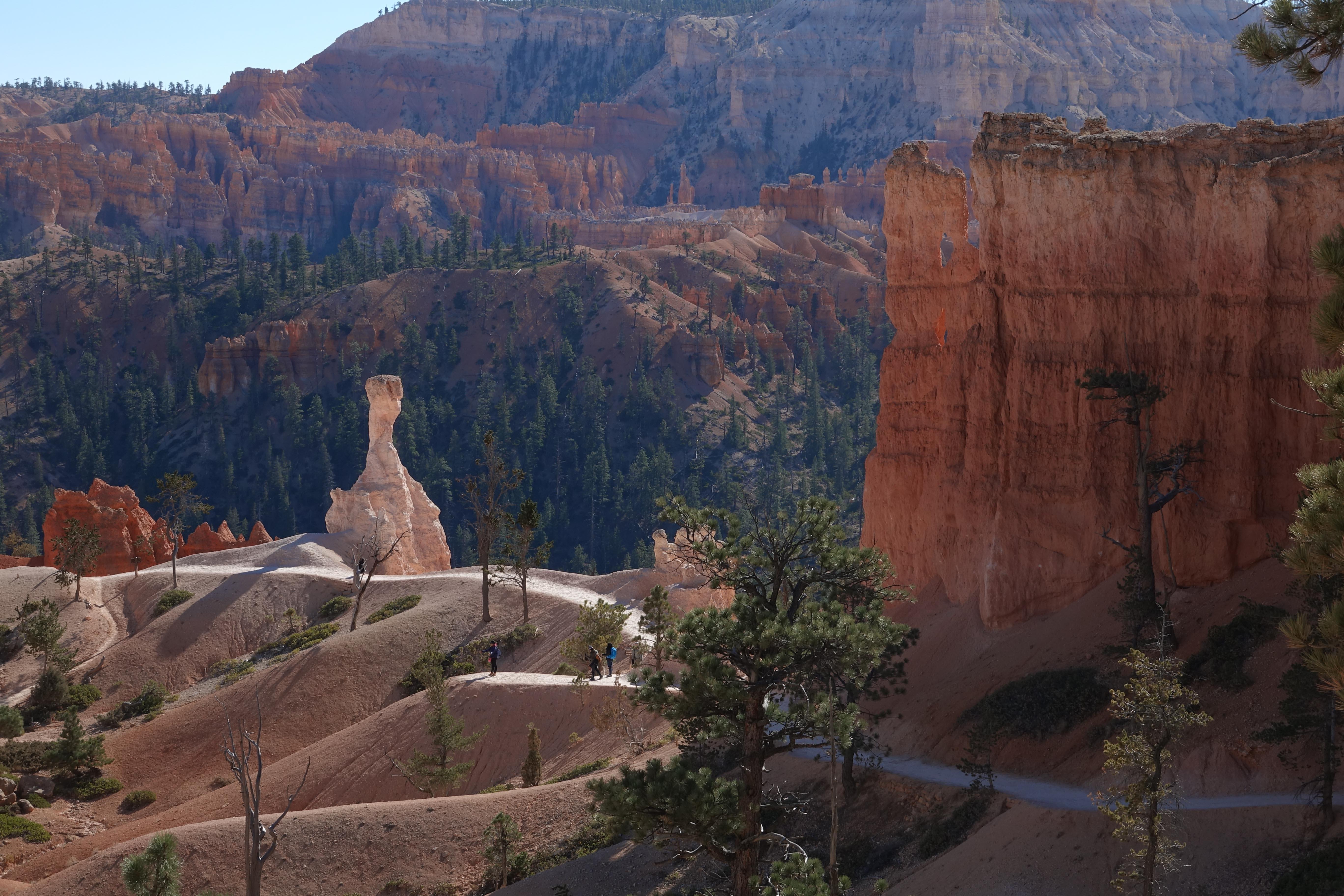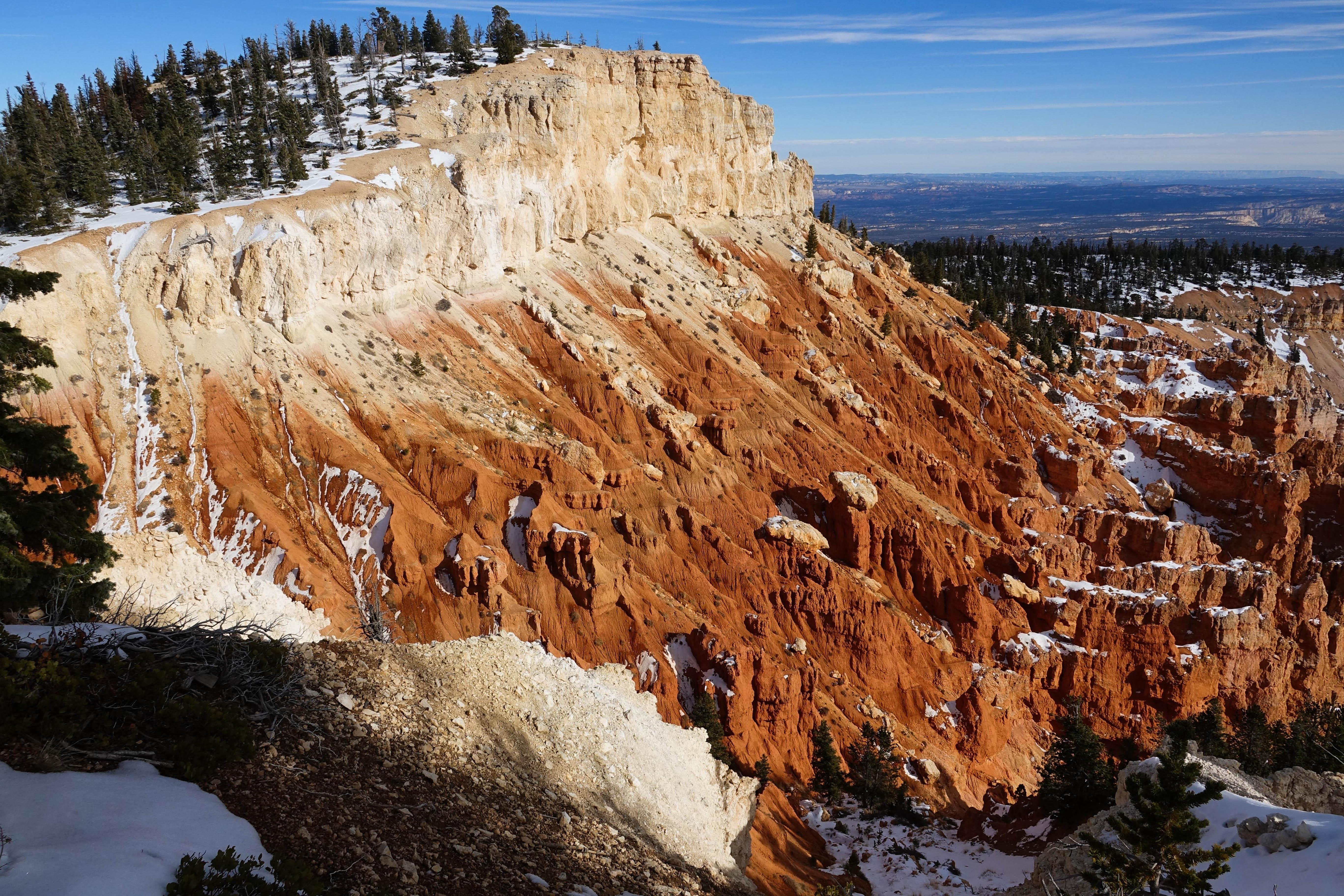Bryce Canyon National Park
Hoodoos (irregular columns of rock) exist on every continent, but here is the largest concentration found anywhere on Earth. Situated along a high plateau at the top of the Grand Staircase, the park's high elevations include numerous life communities, fantastic dark skies, and geological wonders that defy description.
From the North: Take I-15 south to UT-20 (exit 95). Travel east on UT-20 to US-89. Follow US-89 south to UT-12. Travel east on UT-12 to UT-63. Take UT-63 south to Bryce Canyon NP. From the South through Zion National Park: Take I-15 north to UT-9 (exit 16). Follow UT-9 east through Zion National Park to US-89. Travel north on US-89 to UT-12. Go east on UT-12 to UT-63. Take UT-63 south to Bryce Canyon NP. From the East Travel west on UT-12 to UT-63. Take UT-63 south to Bryce Canyon NP.
- Astronomy
- Stargazing
- Biking
- Road Biking
- Camping
- Backcountry Camping
- Car or Front Country Camping
- Group Camping
- RV Camping
- Food
- Dining
- Guided Tours
- Self-Guided Tours - Auto
- Bus/Shuttle Guided Tour
- Hiking
- Backcountry Hiking
- Horse Trekking
- Junior Ranger Program
- Skiing
- Cross-Country Skiing
- Snowshoeing
- Wildlife Watching
- Birdwatching
- Park Film
- Museum Exhibits
- Shopping
- Bookstore and Park Store
- Native American Heritage
- Animals
- Birds
- Cats (wild)
- Canyons and Canyonlands
- Climate Change
- Fire
- Forests and Woodlands
- Coniferous Forests
- Geology
- Grasslands
- Meadows
- Natural Sounds
- Night Sky
- Astronomy
- Rock Landscapes and Features
- Scenic Views
- Trails
- Unique Species
- Endangered
Bryce Amphitheater from Inspiration Point

Viewpoints of the iconic Bryce Amphitheater are located along the first 3 miles of the park road and are a popular destination at sunrise.
Winter sunrise at Sunset Point

Here at 8,000' (2438 m) winter comes early and stays late. Snow transforms the landscape and requires seasonal closures in some areas and trails.
Milky Way over the Hoodoos

Bryce Canyon's clean air and dark night skies are some of its most precious and vulnerable resources. Full moon nights also provide a unique experience of seeing the park after dark.
Queen's Garden Trail

More strenuous trails below the rim provide up-close views of the hoodoo rock spires, while easier walks along the rim give perspective from above.
Bristlecone Loop trail near Yovimpa Point

The park's highest elevations at its southern end and backcountry areas provide views of over 100 miles (161 km) atop high steep cliffs.